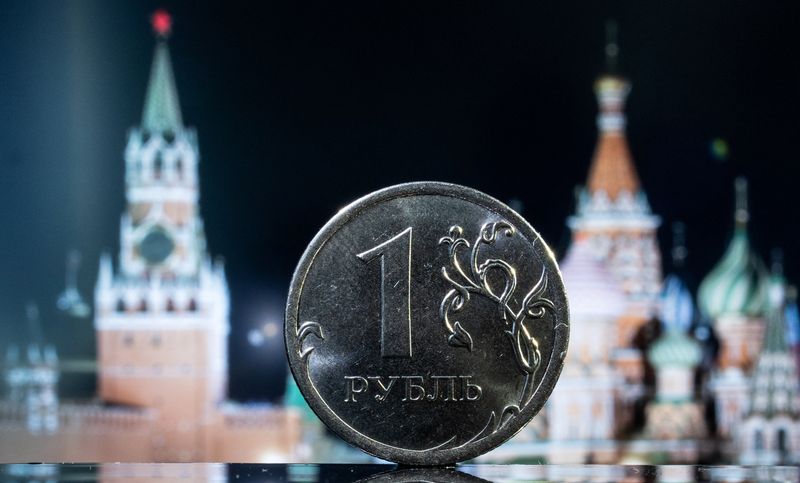By Alexander Marrow and Elena Fabrichnaya
MOSCOW (Reuters) - Russia's rate-cutting cycle is over for now, a Reuters poll suggested on Friday, with analysts expecting the central bank to keep its key rate unchanged at 7.5% until the end of 2022, with high inflation and sanctions hampering Russia's economic recovery.
Russia's economic landscape changed drastically after Moscow sent tens of thousands of troops into Ukraine on Feb. 24, triggering sweeping Western restrictions on its energy and financial sectors, including a partial freeze of Russian reserves, and leading scores of companies to exit the market.
In the immediate aftermath the central bank hiked its key rate to 20% from 9.5% in order to mitigate risks to financial stability, before beginning a series of rate cuts to current levels.
The average forecast among 13 analysts polled in late September suggested the Russian economy was on track to shrink by 3.2% this year. A similar poll in August had predicted a contraction of 4.7%.
Amid market volatility and severe uncertainty on Russian markets, some analysts declined to participate in the poll. One analyst who refused to participate said giving forecasts at this time was "just not relevant and a waste of time".
Nevertheless, analysts' forecasts are becoming less pessimistic as officials revise their outlooks and fresh statistics arrive.
Data published this week showed Russia's unemployment rate fell to a record low in August, but other indicators were less encouraging, with retail sales shrinking and weekly inflation returning for the first time since May.
The economy ministry in April said gross domestic product could fall by more than 12% this year, in what would have been the biggest contraction since the mid-1990s, but forecasts have softened since then as Russia pushes back against restrictions.
However, President Vladimir Putin's partial mobilisation order last week may impact the workforce and economic output, while the expectations of fresh sanctions are likely to further erode the country's growth prospects.
The rouble has soared, supported by capital controls Moscow introduced to shield its financial system from sanctions, as well as Russia's strong current account surplus due to high prices for commodity exports and falling imports.
But the currency is seen weakening in coming months as the government tries to curb its strength, and is expected to trade at 77.50 against the dollar a year from now, according to the poll, compared with a rate of 73.90 predicted by analysts in late August. Friday's official rate was at 57.41 roubles per dollar.

Inflation, one of the key concerns among Russian households, is expected to accelerate to 12.4%, from 8.4% in 2021, according to the poll, but below last month's expectations of a 13.0% annual consumer prices increase.
In January, before the conflict in Ukraine began, analysts had on average expected the economy to grow by 2.5% with year-end inflation at 5.5%. Russia targets inflation at 4%.